
Film noir is a cinematic term used primarily to describe stylized Hollywood crime dramas, particularly those that emphasize cynical attitudes and motivations. The 1940s and 1950s are generally regarded as the "classic period" of American film noir. Film noir of this era is associated with a low-key, black-and-white visual style that has roots in German Expressionism cinematography. Many of the prototypical stories and attitudes expressed in classic noir derive from the hardboiled school of crime fiction that emerged in the United States during the Great Depression.

Crossfire is a 1947 American film noir drama film starring Robert Young, Robert Mitchum and Robert Ryan which deals with the theme of antisemitism, as did that year's Academy Award for Best Picture winner, Gentleman's Agreement. The film was directed by Edward Dmytryk and the screenplay was written by John Paxton, based on the 1945 novel The Brick Foxhole by screenwriter and director Richard Brooks. The film's supporting cast features Gloria Grahame and Sam Levene. The picture received five Oscar nominations, including Ryan for Best Supporting Actor and Gloria Grahame for Best Supporting Actress. It was the first B movie to receive a Best Picture nomination.

Scarlet Street is a 1945 American film noir directed by Fritz Lang. The screenplay concerns two criminals who take advantage of a middle-aged painter in order to steal his artwork. The film is based on the French novel La Chienne by Georges de La Fouchardière, which had been previously dramatized on stage by André Mouëzy-Éon, and cinematically as La Chienne (1931) by director Jean Renoir.
Black Lizard was an American book publisher. A division of the Creative Arts Book Company of Berkeley, California, Black Lizard specialized in reprinting forgotten crime fiction and noir fiction writers and novels originally released between the 1930s and the 1960s, many of which are now acknowledged as classics of their genres.
Hardboiled fiction is a literary genre that shares some of its characters and settings with crime fiction. The genre's typical protagonist is a detective who battles the violence of organized crime that flourished during Prohibition (1920–1933) and its aftermath, while dealing with a legal system that has become as corrupt as the organized crime itself. Rendered cynical by this cycle of violence, the detectives of hardboiled fiction are often antiheroes. Notable hardboiled detectives include Dick Tracy, Philip Marlowe, Nick Charles, Mike Hammer, Sam Spade, Lew Archer, Slam Bradley, and The Continental Op.
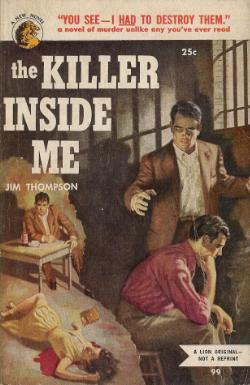
Noir fiction is a subgenre of crime fiction.

The Big Combo is a 1955 American crime film noir directed by Joseph H. Lewis, written by Philip Yordan and photographed by cinematographer John Alton, with music by David Raksin. The film stars Cornel Wilde, Richard Conte and Brian Donlevy, as well as Jean Wallace, who was Wilde's wife at the time. The supporting cast features Lee Van Cleef, Earl Holliman and the final screen appearance of actress Helen Walker.
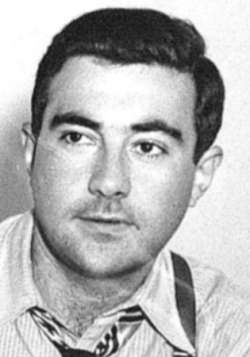
David Loeb Goodis was an American writer of crime fiction noted for his output of short stories and novels in the noir fiction genre. Born in Philadelphia, Goodis alternately resided there and in New York City and Hollywood during his professional years. According to critic Dennis Drabelle, "Despite his [university] education, a combination of ethnicity (Jewish) and temperament allowed him to empathize with outsiders: the working poor, the unjustly accused, fugitives, criminals."
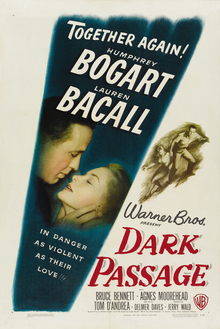
Dark Passage is a 1947 American film noir directed by Delmer Daves and starring Humphrey Bogart and Lauren Bacall. The film is based on the 1946 novel of the same title by David Goodis. It was the third of four films real-life couple Bacall and Bogart made together.
Black Angel is a 1946 American film noir starring Dan Duryea, June Vincent and Peter Lorre. Directed by Roy William Neill, it was his final feature film. Produced by Universal Pictures, it is set in Los Angeles and broadly adapted from Cornell Woolrich's 1943 novel The Black Angel.

The Red House is a 1947 American thriller film noir directed by Delmer Daves, and starring Edward G. Robinson, Lon McCallister, Judith Anderson, Rory Calhoun, Allene Roberts, and Julie London. Its plot follows a young woman raised by a brother and sister who are concealing a secret involving an abandoned farmhouse located deep in the woods on their sprawling property. It is based on the 1945 novel of the same name by George Agnew Chamberlain (1879-1966). The screenplay is by director Delmer Daves and Albert Maltz, uncredited. This was Ona Munson's last feature film appearance.

My Favorite Brunette is a 1947 American romantic comedy film and film noir parody, directed by Elliott Nugent and starring Bob Hope and Dorothy Lamour. Written by Edmund Beloin and Jack Rose, the film is about a baby photographer on death row in San Quentin State Prison who tells reporters his history. While taking care of his private-eye neighbor's office, he is asked by an irresistible baroness to find a missing baron, which initiates a series of confusing but sinister events in a gloomy mansion and a private sanatorium. Spoofing movie detectives and the film noir style, the film features Lon Chaney Jr. playing Willie, a character based on his Of Mice and Men role Lennie; Peter Lorre as Kismet, a comic take on his many film noir roles; and cameo appearances by film noir regular Alan Ladd and Hope partner Bing Crosby. Sequences were filmed in San Francisco and Pebble Beach, California.
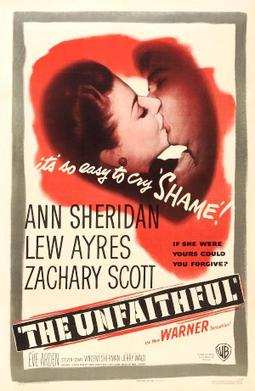
The Unfaithful is a 1947 American murder mystery film noir directed by Vincent Sherman and starring Ann Sheridan, Lew Ayres and Zachary Scott. It was produced and distributed by Warner Brothers. Regarded by some as a film noir, the picture is based on the W. Somerset Maugham-penned 1927 play and William Wyler-directed 1940 film The Letter, which was reworked and turned into an original screenplay by writers David Goodis and James Gunn who shifted the setting from Malaya to the United States.

Too Late for Tears is a 1949 American film noir starring Lizabeth Scott, Don DeFore, and Dan Duryea. Directed by Byron Haskin, its plot follows a ruthless woman who resorts to multiple murders in an attempt to retain a suitcase containing US$60,000 that does not belong to her. The screenplay was written by Roy Huggins, developed from a serial he wrote for The Saturday Evening Post. Arthur Kennedy, Kristine Miller, and Barry Kelley appear in support.
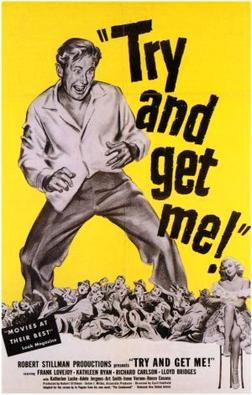
The Sound of Fury is a 1950 American crime film noir directed by Cy Endfield and starring Frank Lovejoy, Kathleen Ryan, Richard Carlson. The film is based on the 1947 novel The Condemned by Jo Pagano, who also wrote the screenplay.

Nightfall is a 1956 American crime film noir directed by Jacques Tourneur and starring Aldo Ray, Brian Keith and Anne Bancroft.

Cutter's Way is a 1981 American neo-noir thriller film directed by Ivan Passer. The film stars Jeff Bridges, John Heard, and Lisa Eichhorn. The screenplay was adapted from the 1976 novel Cutter and Bone by Newton Thornburg.
The doctrine of indivisibility was a legal doctrine in United States copyright law, which held that a copyright was a single, indivisible right that its owner could only assign as a whole. The doctrine was founded upon the policy concern that a defendant alleged to have infringed a single work might find himself facing claims from multiple plaintiffs, all claiming copyright in that same work. Despite the indivisibility doctrine, a copyright holder could still effectively assign certain rights. The assignees of those rights were held to be "mere licensees."

The Night Walker is a 1964 American psychological horror film directed and produced by William Castle, written by Robert Bloch, and starring Robert Taylor, Judith Meredith, Lloyd Bochner and Barbara Stanwyck in her final theatrical film role. It follows the wife of a wealthy inventor who is plagued by increasingly disturbing nightmares, which escalate after her husband's death. It was the final black and white film made by Universal Pictures.
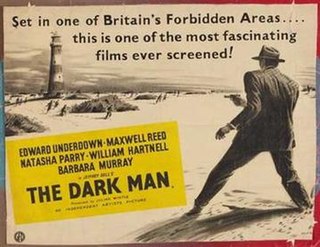
The Dark Man is a 1951 British black and white film-noir thriller film written and directed by Jeffrey Dell and starring Edward Underdown, Maxwell Reed and Natasha Parry. It was produced by Julian WIntle for Rank Studios.
















